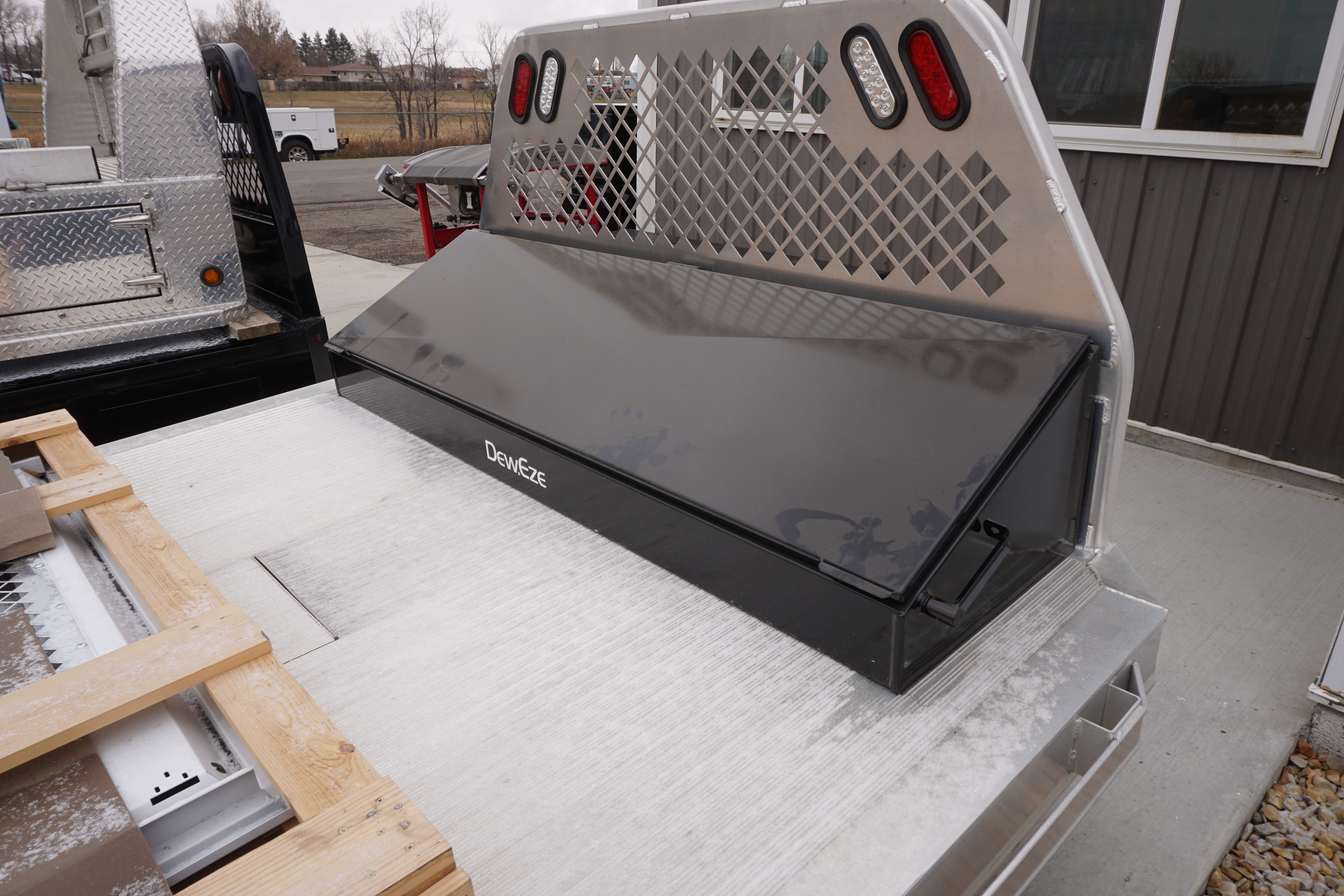Hay Bed Trucks For Sale: Your Ultimate Guide to Efficient Hay Handling pickup.truckstrend.com
For farmers, ranchers, and anyone involved in livestock operations, the efficient and safe handling of hay is paramount. Whether you’re moving large round bales from the field to storage, delivering feed to cattle, or transporting hay for sale, the traditional methods can be incredibly time-consuming, labor-intensive, and even hazardous. This is where Hay Bed Trucks For Sale come into their own. These specialized vehicles are designed to streamline the entire process of hay transportation, transforming a challenging chore into a manageable and even swift operation. Investing in the right hay bed truck can significantly boost your farm’s productivity, reduce operational costs, and enhance safety for your crew.
This comprehensive guide will delve into everything you need to know about hay bed trucks, from their fundamental purpose and diverse types to crucial buying considerations, maintenance tips, and where to find the best deals.
Hay Bed Trucks For Sale: Your Ultimate Guide to Efficient Hay Handling
What Exactly Are Hay Bed Trucks?
At its core, a hay bed truck is a truck chassis equipped with a specialized bed designed specifically for handling hay bales, primarily large round bales, but also square bales. Unlike a standard flatbed, a hay bed incorporates features that allow for the efficient loading, securing, and unloading of multiple bales. The most common and effective versions include hydraulic or electric mechanisms, such as bale spears or arms, that enable the operator to pick up bales from the ground without manual labor, carry them securely, and then unload them with precision. These trucks are purpose-built to navigate various terrains, from muddy fields to paved roads, making them an indispensable asset for modern agricultural operations.
Why Invest in a Hay Bed Truck? The Unrivaled Benefits
The decision to purchase a hay bed truck is often driven by a clear understanding of the substantial benefits they offer:
- Unmatched Efficiency: The primary advantage is the dramatic increase in efficiency. A single operator can load, transport, and unload numerous bales in a fraction of the time it would take with conventional methods, such as using a front-end loader on a tractor for each bale. This translates directly into more time for other critical farm tasks.
- Reduced Labor Costs: By enabling one person to accomplish what might otherwise require multiple hands and machines, hay bed trucks significantly cut down on labor expenses. This is crucial in an industry where labor can be a major overhead.
- Enhanced Safety: Manually handling large hay bales poses significant safety risks, including strains, crushing injuries, and falls. Hay bed trucks, with their automated loading and unloading mechanisms, minimize direct human interaction with heavy bales, drastically improving safety for operators.
- Versatility Beyond Hay: While designed for hay, many bale beds can be adapted for other uses, such as hauling fencing materials, feed sacks, or even small equipment, making them a versatile addition to your fleet.
- Reduced Hay Damage: Bales handled gently and securely with a proper bale bed are less likely to suffer damage during transport, preserving their quality and nutritional value.
- Improved Field Productivity: With faster turnaround times for hay removal, fields can be cleared more quickly, allowing for subsequent operations like fertilization or replanting to proceed without delay.

Types of Hay Bed Trucks: Finding Your Perfect Match

When exploring hay bed trucks for sale, you’ll encounter a few main categories, each with distinct features:
- Dedicated Bale Beds (Hydraulic/Electric): These are the most common and efficient. They feature a robust flatbed with integrated hydraulic or electric bale spears or arms.
- Hydraulic Bale Beds: Powered by the truck’s PTO (Power Take-Off) or a separate hydraulic pump, these offer powerful, smooth, and precise control for lifting and positioning bales. They are generally preferred for heavy-duty, continuous use.
- Electric Bale Beds: These use an electric motor to power the bale handling mechanism, often drawing power from the truck’s battery. While convenient for lighter use or where PTO isn’t available, they may not offer the same power or speed as hydraulic systems.

- Flatbed Trucks with Add-ons: Some farmers opt to modify a standard flatbed truck by adding removable bale spears or a hay rack. While more affordable initially, this setup is often less efficient and versatile than a dedicated bale bed.
- Gooseneck vs. Bumper Pull Compatibility: While the truck itself is the focus, many hay bed trucks are also designed to pull gooseneck trailers, allowing for even greater hauling capacity by pulling a hay trailer behind the truck.
Consider whether you need a new or used hay bed truck. New trucks offer warranties, the latest features, and no prior wear and tear. Used trucks, however, can provide significant cost savings, making them an attractive option for budget-conscious buyers, provided they are thoroughly inspected.
Key Features to Look For When Buying
To ensure you purchase a hay bed truck that meets your specific needs, pay close attention to these crucial features:
- Bed Size and Bale Capacity: Determine how many bales you typically need to move at once. Hay beds come in various lengths, designed to carry anywhere from 4 to 10+ round bales.
- Lifting Mechanism: As discussed, hydraulic is generally superior for heavy, frequent use. Evaluate the strength and reach of the spears or arms.
- Construction Material and Durability: Look for heavy-gauge steel construction, robust welds, and a durable powder-coat finish to withstand harsh outdoor conditions and heavy loads.
- Power Source: Ensure compatibility with your truck’s PTO system or consider an independent hydraulic pump if your truck lacks a suitable PTO.
- Safety Features: Overload protection, emergency stops, clear controls, and good visibility are paramount.
- Lighting and Wiring: Ensure all lights (tail lights, brake lights, work lights) are functional and properly wired for road travel and nighttime operation.
- Gooseneck Hitch Integration: If you plan to pull a gooseneck trailer, ensure the hay bed is designed with an integrated, easily accessible gooseneck hitch.
- Toolboxes and Storage: Integrated storage compartments can be a huge convenience for tools, straps, or chains.
Where to Find Hay Bed Trucks For Sale
The market for hay bed trucks is diverse, offering several avenues for potential buyers:
- Agricultural Equipment Dealerships: These are excellent sources for both new and used hay bed trucks. Dealers often offer financing, warranties, and after-sales support.
- Online Marketplaces: Websites like TractorHouse.com, MachineryTrader.com, IronPlanet.com, and even general classifieds like Facebook Marketplace or Craigslist are treasure troves for used equipment. Be prepared to travel for inspection.
- Farm Auctions: Local and regional farm auctions can yield excellent deals, but purchases are typically "as-is," requiring careful inspection beforehand.
- Specialized Manufacturers’ Websites: Brands like Harper, DewEze, and others often list their authorized dealers and inventory online.
- Local Farm Publications and Word-of-Mouth: Don’t underestimate the power of local connections and classified ads in farming communities.
Important Considerations Before Purchase
Before you commit to a purchase, take these critical factors into account:
- Budget: Establish a clear budget, remembering to factor in potential delivery costs, taxes, and any necessary modifications or repairs.
- Type of Hay: While most beds handle round bales, some are better suited for large square bales, or offer versatility for both.
- Scale of Operation: A hobby farm might suffice with a simpler, smaller unit, whereas a large commercial operation will demand a heavy-duty, high-capacity truck.
- Truck Compatibility: The hay bed must be compatible with your truck’s chassis length, Gross Vehicle Weight Rating (GVWR), and axle ratings. Consult your truck’s specifications and the hay bed manufacturer’s recommendations.
- Maintenance History (for Used): Request detailed maintenance records. A well-maintained used truck can be a fantastic value.
- Warranty (for New): Understand the terms of the warranty, including coverage for parts and labor.
- Transportation: Plan how you will get the truck to your farm if it’s not being delivered by the seller.
Tips for Buying a Used Hay Bed Truck
Buying used can save you money, but it requires diligence:
- Thorough Inspection: Visually inspect the frame for cracks, bends, or excessive rust. Check all hydraulic lines, cylinders, and pumps for leaks or damage. Test all electrical components.
- Test All Functions: Operate the bale spears/arms through their full range of motion. Listen for unusual noises.
- Check for Wear: Look at pivot points, pins, and bushings for excessive wear, which can indicate heavy use or lack of maintenance.
- Tire Condition: If tires are included, check their tread depth and for any cracks or bulges.
- Seller Reputation: If buying from a private party, ask for references or check online reviews if possible.
- Negotiate: Don’t be afraid to negotiate the price, especially if you find issues during your inspection.
Maintenance and Longevity
Proper maintenance is key to maximizing the lifespan and performance of your hay bed truck:
- Regular Lubrication: Grease all pivot points, pins, and moving parts regularly as per the manufacturer’s recommendations.
- Hydraulic System Checks: Inspect hydraulic hoses for leaks, cracks, or chafing. Check hydraulic fluid levels and cleanliness, changing filters as needed.
- Electrical System: Ensure all wiring connections are secure and free of corrosion. Test lights and controls periodically.
- Structural Integrity: Periodically inspect the frame, welds, and bed for any signs of stress, cracks, or damage. Address rust promptly.
- Cleanliness: Keep the bed free of hay debris, mud, and excessive dirt, especially around moving parts and electrical connections.
- Tire Care: Maintain correct tire pressure and inspect for wear or damage (if applicable to the truck itself).
Potential Challenges and Solutions
- High Initial Cost: Hay bed trucks represent a significant investment. Solution: Explore financing options, consider well-maintained used models, or opt for a simpler flatbed conversion if your budget is very tight.
- Compatibility Issues: Matching the hay bed to your truck’s specifications can be complex. Solution: Always consult the manufacturer’s compatibility charts and seek professional advice if unsure.
- Maintenance Complexity: Hydraulic and electrical systems can be daunting. Solution: Follow the owner’s manual diligently, learn basic troubleshooting, and establish a relationship with a reliable mechanic.
- Learning Curve: Operating a hay bed truck efficiently and safely takes practice. Solution: Start slowly, practice in an open area, and always adhere to safety guidelines.
Practical Advice and Actionable Insights
When you’re in the market for a hay bed truck, start by clearly defining your operational needs: how much hay do you move, how often, and over what terrain? This will guide your choice of size, power, and features. Prioritize safety and durability, as these machines handle extremely heavy loads. Don’t rush the decision; research thoroughly, inspect potential purchases meticulously, and don’t hesitate to ask questions. A well-chosen hay bed truck is an investment that will pay dividends in time saved, labor reduced, and enhanced efficiency for years to come.
Concluding Summary
Hay bed trucks are a cornerstone of modern agricultural efficiency, offering unparalleled benefits in terms of time savings, labor reduction, and safety for anyone involved in hay handling. From the robust hydraulic systems to their impressive carrying capacities, these specialized vehicles transform one of farming’s most demanding tasks into a streamlined operation. By understanding the different types available, focusing on key features, and following practical buying and maintenance advice, you can confidently navigate the market for hay bed trucks for sale and acquire an asset that will significantly enhance your farm’s productivity and profitability.
Price Table: Estimated Costs for Hay Bed Trucks
Please note: Prices for hay bed trucks can vary wildly based on brand, features, condition (new vs. used), geographical location, and current market demand. This table provides estimated ranges for common configurations and should be used as a general guide, not definitive pricing. Always obtain specific quotes from sellers.
| Type of Truck/Bed | Condition | Key Features | Estimated Price Range (USD) | Notes |
|---|---|---|---|---|
| New Dedicated Bale Bed | New | Hydraulic arms/spears, heavy-duty steel, PTO/Pump | $15,000 – $35,000+ | Bed only, not including the truck chassis. Installation extra. |
| Used Dedicated Bale Bed | Used | Hydraulic or electric, 5-10+ bale capacity | $5,000 – $20,000 | Price depends heavily on age, hours, condition, and brand. |
| New Truck w/ New Bale Bed | New | New chassis (Ford, Ram, Chevy) + new bale bed | $80,000 – $150,000+ | Complete, ready-to-work unit. Heavy-duty chassis (e.g., F-450, 5500). |
| Used Truck w/ Bale Bed | Used | Older chassis (e.g., 2000s-2010s) + bale bed | $25,000 – $70,000 | Varies widely based on truck mileage/condition, and bed condition. |
| Basic Flatbed Conversion | New | Basic flatbed, manual/simple electric spears | $2,000 – $8,000 | Bed conversion only. Less efficient than dedicated units. |
Frequently Asked Questions (FAQ) About Hay Bed Trucks
Q1: How much does a hay bed truck cost?
A1: The cost varies significantly. A new, dedicated bale bed (without the truck chassis) can range from $15,000 to $35,000+. A complete new truck with a new bale bed can be $80,000 to $150,000+. Used units are generally much more affordable, starting from $25,000 for a full truck and bed combination, depending on age and condition.
Q2: What’s the difference between hydraulic and electric bale beds?
A2: Hydraulic bale beds use fluid power, typically from the truck’s PTO, offering superior strength, speed, and precision for heavy, continuous use. Electric bale beds are powered by the truck’s battery, are generally simpler and more affordable, and are suitable for lighter or occasional use.
Q3: Can I convert my existing flatbed truck into a hay bed truck?
A3: Yes, it’s possible. You can purchase a standalone bale bed unit and have it installed on your existing flatbed truck, provided your truck’s chassis and GVWR are compatible with the weight and demands of the bale bed and its cargo.
Q4: What size truck do I need for a hay bed?
A4: Most dedicated hay beds are designed for heavy-duty trucks, typically 1-ton (e.g., Ford F-350/450, Ram 3500/4500, Chevy/GMC 3500/4500) or even medium-duty chassis. The truck must have sufficient GVWR to safely handle the weight of the bale bed itself plus the maximum number of bales it will carry.
Q5: Are used hay bed trucks a good investment?
A5: Yes, a well-maintained used hay bed truck can be an excellent investment, offering significant cost savings. However, thorough inspection of the frame, hydraulics, electrical system, and overall condition is crucial to avoid unexpected repair costs down the line.
Q6: How many bales can a hay bed truck carry?
A6: The capacity varies by bed length and design. Most common models are designed to carry between 4 to 10 large round bales (e.g., 5×6 ft bales), depending on the specific bed length and how bales are stacked. Some specialized beds can carry more.
